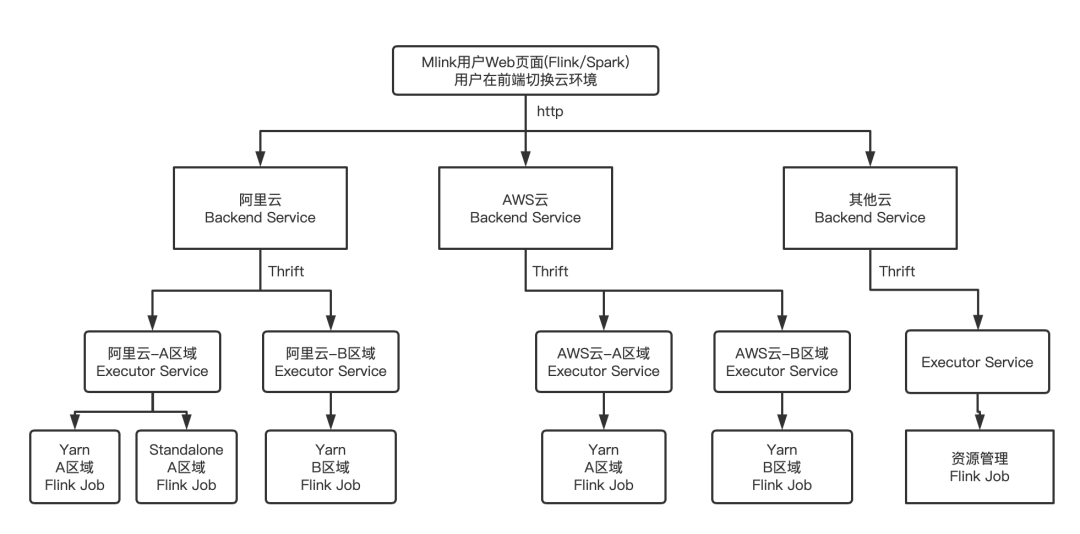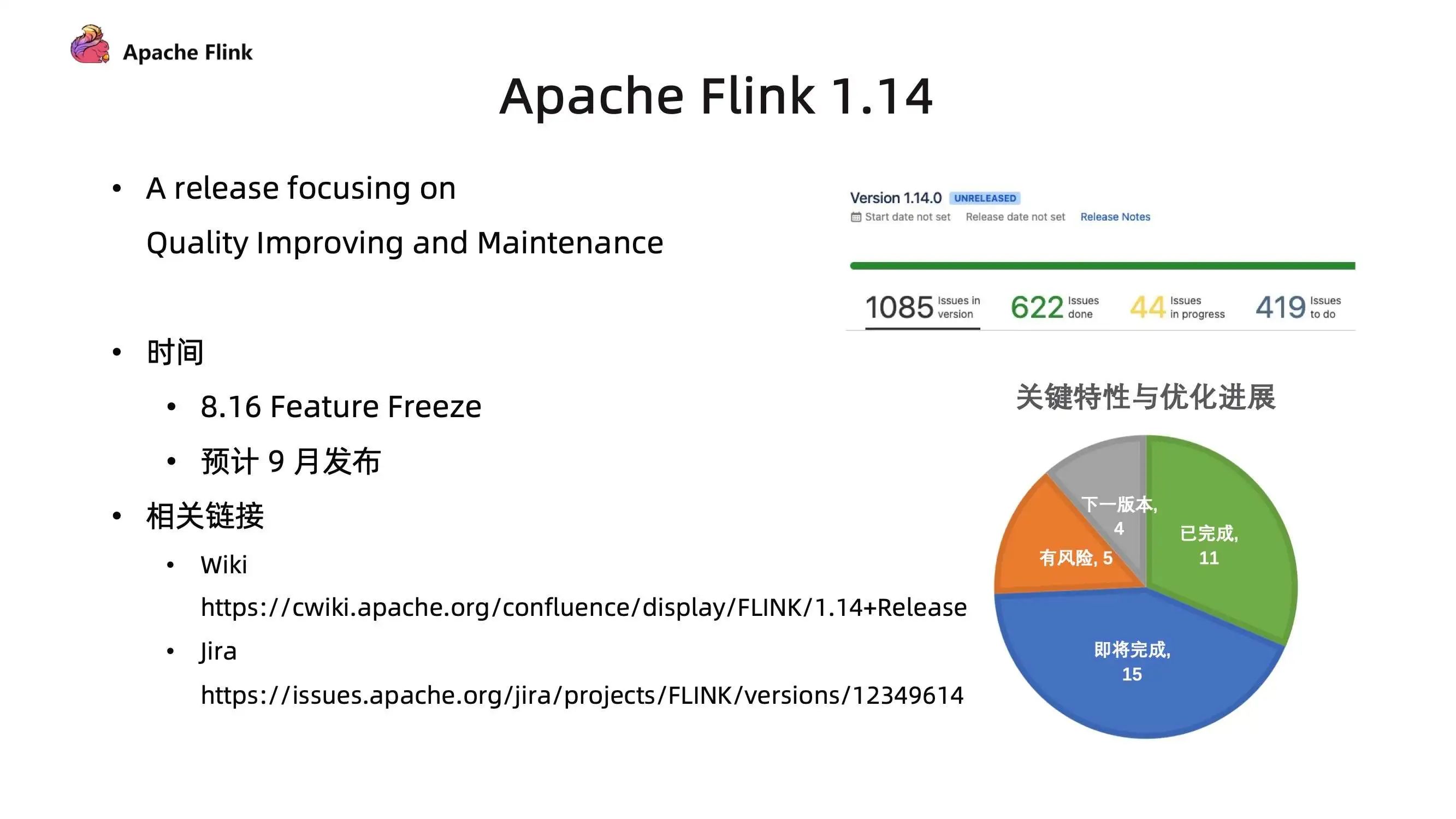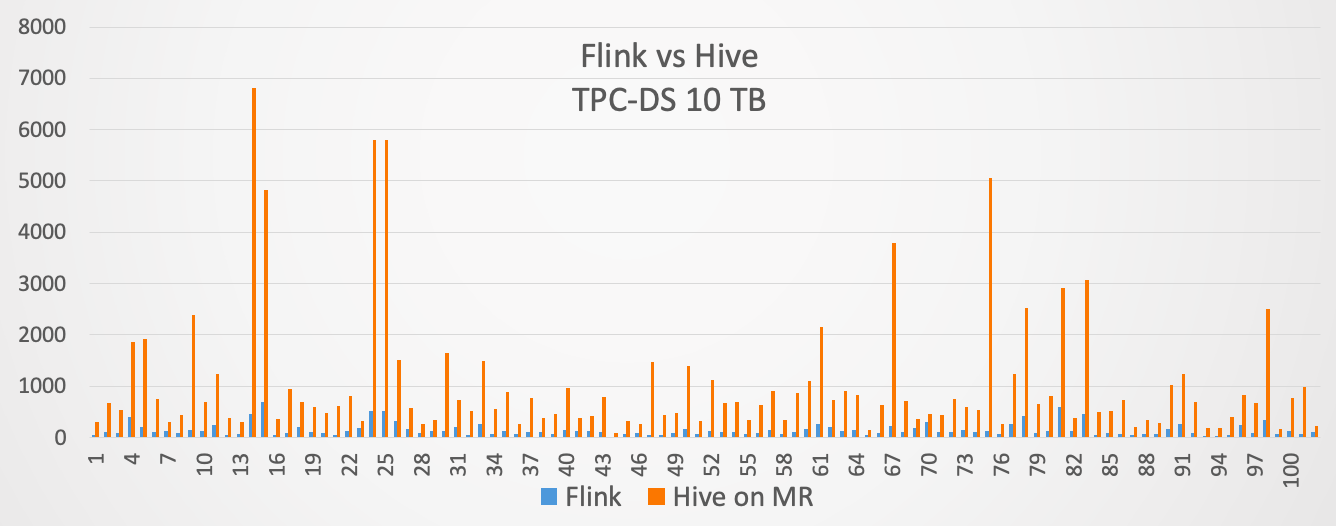文章目录
Apache Flink 1.1.0于2016年08月08日正式发布,虽然发布了好多天了,我觉得还是有必要说说该版本的一些重大更新。Apache Flink 1.1.0是1.x.x系列版本的第一个主要版本,其API与1.0.0版本保持兼容。这就意味着你之前使用Flink 1.0.0稳定API编写的应用程序可以直接运行在Flink 1.1.0上面。本次发布共有95位贡献者参与,包括对Bug进行修复、新特性添加以及维护性能,这些加起来有超过450个JIRA issues。完整的issues列表参见(http://flink.apache.org/blog/release_1.1.0-changelog.html)。下面主要对本版本的一些重要特性进行介绍。
连接器(Connectors)
流连接器(streaming connectors)是Flink DataStream API非常重要的一部分。Flink 1.1.0版本添加了对新外部系统的支持,并且对现有的一些连接器进行了一些提升。
Continuous File System Sources
在Flink 1.0版本,社区经常收到用户希望能够监听文件夹, 并且持续地处理其中文件的特性。现在Flink 1.1通过FileProcessingMode支持这个功能了!
///////////////////////////////////////////////////////////////////// User: 过往记忆 Date: 2016-08-18 Time: 23:38 bolg: https://www.iteblog.com 本文地址:https://www.iteblog.com/archives/1749 过往记忆博客,专注于hadoop、hive、spark、shark、flume的技术博客,大量的干货 过往记忆博客微信公共帐号:iteblog_hadoop ///////////////////////////////////////////////////////////////////// DataStream<String> stream = env.readFile( textInputFormat, "hdfs:///file-path", FileProcessingMode.PROCESS_CONTINUOUSLY, 5000, // monitoring interval (millis) FilePathFilter.createDefaultFilter()); // file path filter
上面的代码片段将会每隔5秒监听hdfs:///file-path目录,详细请参见https://ci.apache.org/projects/flink/flink-docs-release-1.1/apis/streaming/index.html#data-sources。
Kinesis Source and Sink
Flink 1.1添加了Kinesis connector,我们可以通过它消费(FlinkKinesisConsumer)Kinesis中的数据;同时我们也可以将产生的数据写入(FlinkKinesisProduer)到Amazon Kinesis Streams里面:
DataStream<String> kinesis = env.addSource(
new FlinkKinesisConsumer<>("stream-name", schema, config));
详细文档请参见:https://ci.apache.org/projects/flink/flink-docs-release-1.1/apis/streaming/connectors/kinesis.html
Cassandra Sink
Apache Cassandra sink允许我们将Flink里面的数据写入到Cassandra。如果查询具有幂等性(idempotent),Flink可以提供exactly-once保证,这意味着我们可以操作多次而结果并不会改变。
CassandraSink.addSink(input)
Table API and SQL
Table API是为关系流(relational stream)和批处理提供的类SQL表达式语言(expression language),我们可以很容易地将它嵌入到Flink的DataSet和DataStream API中,包括Java和Scala语言。
/////////////////////////////////////////////////////////////////////
User: 过往记忆
Date: 2016-08-18
Time: 23:38
bolg: https://www.iteblog.com
本文地址:https://www.iteblog.com/archives/1749
过往记忆博客,专注于hadoop、hive、spark、shark、flume的技术博客,大量的干货
过往记忆博客微信公共帐号:iteblog_hadoop
/////////////////////////////////////////////////////////////////////
Table custT = tableEnv
.toTable(custDs, "name, zipcode")
.where("zipcode = '12345'")
.select("name")
初始版本在Flink 1.0已经可用。Flink 1.1版本社区投入了很多工作来重新对Table API进行架构,并且整合了Apache Calcite。
在这第一个版本(也就是Flink 1.1.0),流上面的SQL(以及Table API)查询仅仅能进行select、filter以及union操作。和Flink 1.0相比,重新设计的Table API支持更多的scalar functions,支持从外部数据源读表数据,并且可以将计算好的结果写回到外部源:
Table iteblog = tableEnv.sql( "SELECT STREAM product, amount FROM Orders WHERE product LIKE '%Rubber%'");
更多关于Flink SQL的信息可以参见《Apache Flink:Table API和SQL发展现状概述》:https://www.iteblog.com/archives/1691
DataStream API
DataStream API现在公开了 session windows,并且允许延迟(allowed lateness)成为一等公民。
Session Windows
Session windows的应用场景是窗口范围内的数据需要根据输入的数据进行调节。这种机制使得我们拥有一个窗口,该窗口对每个key都会创建单独的点,如果一段时间内该点没有活动则会被删除。我们可以配置session的间隔,该值设定了每个session最多等待新的数据多长时间,超过了该session将会被关闭。
input.keyBy(<key selector>)
.window(EventTimeSessionWindows.withGap(Time.minutes(10)))
.<windowed transformation>(<window function>);
Support for Late Elements
现在你可以指定windowed转换如何处理延迟的数据,以及允许延迟多长时间。该参数称为allowed lateness,指定了元素最对可以延迟多久:
input.keyBy(<key selector>).window(<window assigner>)
.allowedLateness(<time>)
.<windowed transformation>(<window function>);
元素只要在允许延迟的时间范围内仍然会被放入到Windows中,并且在计算结果的时候使用到。但是如果元素超过了允许延迟的时间,此元素将会被删除。
复杂事件处理(CEP)的Scala API
Flink 1.0版本为CEP增加了一些初始版本的类库。该类库的核心是Pattern API,其允许我们指定一个模式来匹配当前的事件流(event stream)。然而在Flink 1.0版本此API仅仅适用于Java;值得高兴的是,在Flink 1.1版本,社区为Scala语言提供了同样的API,允许我们以一种更加简洁的方式来指定你的事件模式(event patterns)。更多细节参见官方博客和其他相关CEP文档。
Metrics
Flink新的metrics system允许我们很容易地收集和暴露我们应用系统中的metrics到外部系统中。我们可以通过runtime context为应用程序添加counters、gauges以及histograms。
Counter counter = getRuntimeContext()
.getMetricGroup()
.counter("my-counter");
所有注册的metrics将会通过reporters来暴露。Flink内置支持JMX, Ganglia, Graphite以及statsD。即使是我们自定义的metrics,Flink也暴露出很多内部的metrics,比如checkpoint sizes以及JVM stats.
Apache Flink 1.1.1
Apache Flink 1.1.1发布距Apache Flink 1.1.0不到三天。其原因是Maven仓库的Apache Flink 1.1.0有一个Hadoop依赖问题。里面,没有部署Hadoop 1版本,而1.1.0artifacts却依赖了Hadoop 1。所有建议所有使用Flink 1.1.0的用户升级到1.1.1版本,如下:
<dependency> <groupId>org.apache.flink</groupId> <artifactId>flink-java</artifactId> <version>1.1.1</version> </dependency> <dependency> <groupId>org.apache.flink</groupId> <artifactId>flink-streaming-java_2.10</artifactId> <version>1.1.1</version> </dependency> <dependency> <groupId>org.apache.flink</groupId> <artifactId>flink-clients_2.10</artifactId> <version>1.1.1</version> </dependency>本博客文章除特别声明,全部都是原创!
原创文章版权归过往记忆大数据(过往记忆)所有,未经许可不得转载。
本文链接: 【Apache Flink 1.1.0和1.1.1发布,支持SQL】(https://www.iteblog.com/archives/1749.html)









